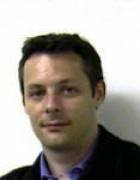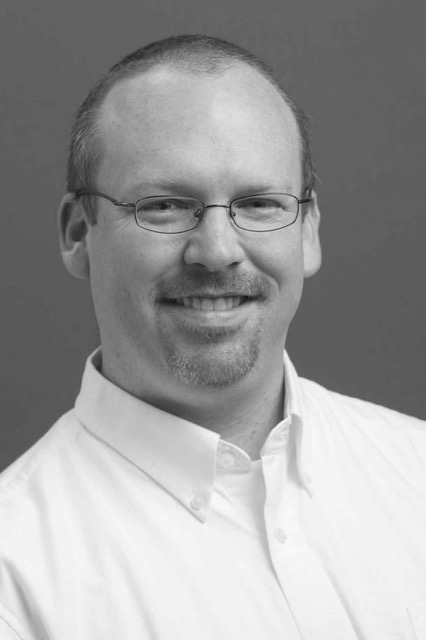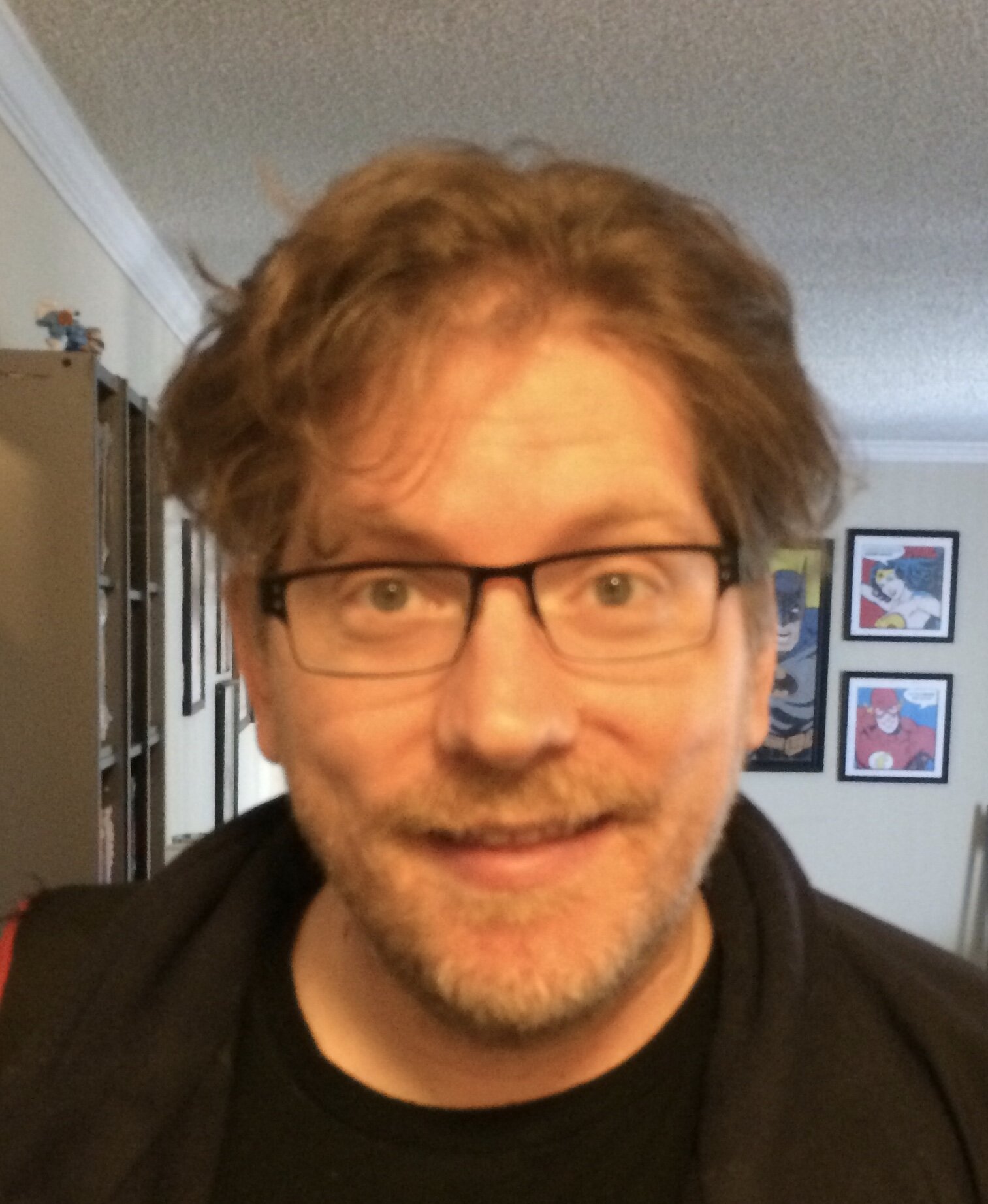Welcome to the Fall Symposium on Integrating Planning, Diagnosis, and Causal Reasoning
Part of the AAAI Fall Symposium Series
Reality rarely proceeds according to plan. Planning, plan execution, diagnosis, and causal explanation have each been examined by various research efforts, but discussion of the linkages between them in the literature is still somewhat sparse. When considering how to integrate these functions, at least three questions must be considered:
- System integration: how to integrate planning, plan execution, diagnosis, and causal explanation in a single system?
- Model / Belief updates: when the unexpected happens, how does the system change its internal representation so future plans are effective?
- Replanning: what to do now that the unexpected has happened?
In many environments, an agent must revise either its plan, policy, or model(s) during execution to account for new information resulting from the presence of other agents, non-deterministic dynamics, exogenous events, unobservable complications, obstacles, or opportunities. Incorporating new information for ongoing or future planning spans the gamut of applying quick fixes to deliberating about the past. Simply revising the plan or objectives during execution – e.g., via plan repair, replanning, or regoaling – may be computationally inexpensive, but lead to short-sighted decisions. Revising the system’s models based on new information may be a better long-term strategy, but may be more costly and require reasoning across the boundaries of a system’s components.
Diagnosis, in the most general sense, is about detecting the source of a problem and correcting it. The model-based diagnosis community has studied for many years the issue of determining from observations what has gone wrong or what has happened. In many agents, understanding and recognizing the causes of both internal discrepancies (i.e., faults) and external discrepancies (i.e., surprises from the environment) can help the agent to respond, mitigate possible consequences, or capitalize on opportunities. This draws on related topics of causal explanation, causal discovery and inference, and root cause analysis, which all attempt to recognize the cause of observed changes or phenomena. All of these fill a similar role, and the capability to answer such questions can allow agents to respond more intelligently to those failures.
Performing diagnosis while executing a plan gives a planning and execution agent an opportunity to recover from failures; however, it also raises many new issues. These include sharing reasoning time between planning and diagnosis, trading off execution resources between goal achievement and diagnostic testing (for active diagnosis), and how to act in the presence of multiple competing diagnoses.
This symposium will raise awareness, promote discussion, and encourage cross-fertilization of ideas from the following topics:- Integration of planning and plan execution
- Theory (e.g. flexibility vs uncertainty, replanning vs contingent planning algorithms)
- Practice (technologies, architectures, system integration)
- Integration of planning and fault management (diagnosis, prognostics, anomaly detection) technologies:
- Planning to Diagnose (active diagnosis)
- Planning and Fault Model Integration (impact of diagnosis algorithms on plan model revision, level of abstraction of models)
- Integration of planning and causal explanation (state/event estimation and prediction) technologies:
- Improving or revising plans based on inferred causal explanations
- Revising long-term models based on causal explanation
Accepted symposium papers, posters, and presentations will be archived as a set of working papers (AAAI will no longer create a technical report), so we welcome resubmissions of relevant work from other venues provided the authors confirm doing so does not create reviewing or copyright conflicts.
Building from prior workshops in closely related areas, this symposium, the first in a series, is intended to become a forum for discussing the integration of planning systems and execution with specialized subareas of artificial intelligence. The focus of this iteration is on gathering researchers from the automated planning, planning and execution, model-based diagnosis, explanation, causal inference, and root-cause analysis communities to discuss topics at their intersection. As such, we will allocate considerable time to presentations from different viewpoints, as well as panels for discussion of disagreements and future joint projects, such as competitions.
Organizers
| Name | Affiliation | Website | |
|---|---|---|---|
| Jeremy Frank | NASA Ames Research Center | jeremy.d.frank AT nasa.gov | |
| Matthew Molineaux | Wright State University, USA | matthew.molineaux AT wright.edu | |
| Mark 'Mak' Roberts | Naval Research Laboratory, USA | mark.roberts AT nrl.navy.mil | URL |
| Name | Affiliation |
|---|---|
| Ron Alford | MITRE Corporation, USA |
| Sudipto Ghoshal | Qualtech Systems, Inc. |
| Edward Balaban | NASA |
| J. Benton | NASA |
| Sara Bernardini | Royal Holloway University of London |
| Michael Aguilar | NASA |
| Tim Niemueller | RWTH Aachen University |
| Alban Grastien | Data61 |
| Johan de Kleer | Palo Alto Research Center, Inc. |
| Matthew Klenk | Palo Alto Research Center |
| Christophe Guettier | SAFRAN |
| Michael Cashmore | King's College London |
| Jussi Rintanen | Aalto University |
| Patrik Haslum | ANU |
| Natalia Alexandrov | NASA |
| Roni Stern | Ben Gurion University of the Negev |
| Michael Rubin | Red Canyon Software |
Important Dates
Abstract Submission - July 27, 2018 (NEW!)
Paper Submission - August 3, 2018 (EXTENDED!)
Author Notification - August 20, 2018 (EXTENDED!)
Registration deadline for accepted papers - August 24, 2018
Author Feedback for final versions - August 27, 2018
Registration deadline for interested attendees - September 21, 2018
Final Version - September 28, 2018 - Please submit your final version to EasyChair. (EXTENDED!)
Symposium held - October 18-20 - West Arlington Gateway, Arlington, VA, USA
Submissions
Submissions should follow the AAAI formatting requirements. Regular papers should be up to 8 pages plus one page for references. Position papers should be up to 4 pages plus one page for references. Please include author names, affiliations, and the paper number on the submission. Although the reviewing process is single-blind (authors will be known), we expect reviewers to abide by AAAI's standard ethics and confidentiality (cf. Publication Ethics and Malpractice Statement).
Submissions will be accepted through easychair: Easychair link
Program
We are located in room: Hemingway 1
Registration and Venue Details are located at the AAAI Fall Symposium website
We aim to publish a "10 Challenges" editorial in a venue such as AI Magazine. To this end, we have structured a schedule centered around discussion and debate with the final half-day invested in bringing together the main themes of this symposium.
|
Key |
|---|
| Group Discussions |
| Challenge Problem Talks & Discussion |
| Paper Talks & Discussion |
| Symposia-wide events |
|
Thursday, October 18 --- Room: Hemmingway 1 |
|
|---|---|
| 09:00 | Symposium Overview |
| Key questions and process; linking the talks together | |
| 10:30 | Break |
| 11:00 |
Challenge Problem: Planning and Safety Challenges in Autonomous Driving Systems Christophe Guettier (SAFRAN) |
| Challenge Problem Discussion | |
| 12:30 | Lunch |
| 14:00 | Paper Discussions |
| Rethinking System Health Management Edward Balaban, Stephen Johnson and Mykel Kochenderfer |
|
| Diagnostic Explanation from the Integrated Agent Perspective Matthew Molineaux |
|
| Integrating AI into Planning, Diagnostic, and Prescription Systems for Human & Robotic Deep Space Exploration Missions Kevin Woodward, Sadananda Narayanappa, Matthew Horak and Haifeng Chen |
|
| 15:30 | Break |
| 16:00 |
Challenge Problem: Autonomous Air Vehicles J. Benton |
| Challenge Problem Discussion | |
| 18:00 | AAAI Symposia Reception |
|
Friday, October 19 --- Room: Hemmingway 1 |
|
|---|---|
| 09:00 |
Challenge Problem: Distributed Spacecraft Autonomy Mark Micire (NASA AMES) |
| Challenge Problem Discussion | |
| 10:30 | Break |
| 11:00 | Paper Discussions |
| Resource Bounded Goal Obfuscation in Adversarial Environments Anagha Kulkarni, Matthew Klenk, Shantanu Rane and Hamed Soroush |
|
| Diagnosis as Computing Causal Chains from Event Traces Shakil Khan and Mikhail Soutchanski |
|
| Executing Contingent Plans: Challenges in Deploying Artificial Agents Christian Muise, Miroslav Vodolan, Shubham Agarwal, Ondrej Bajgar and Luis Lastras |
|
| 12:30 | Lunch |
| 14:00 | Paper and Panel Discussions |
| Model-based Design Assessment and Fault Management Visualization Technologies – A Feasibility Study Deepak Haste, Sudipto Ghoshal, Stephen Johnson and Craig Moore |
|
| Panel Discussion: Tools and Languages for Planning, Diagnosis, and Causal Reasoning |
|
| Michael Rubin, Program Manager, FSW IV&V, Red Canyon Software & Engineering Christophe Guettier, Innovation program manager, Autonomous Systems Area, Safran Group Mark Micire, Lead, Intelligent Robotics Group, NASA Ames Research Center Jeremy Frank, Lead, Planning and Scheduling Group, NASA Ames Research Center J. Benton, Computer Scientist, Planning and Scheduling Group, NASA Ames Research Center |
|
| 15:30 | Break |
| 16:00 |
Challenge Problem: The Europa Lander Mission: A Space Exploration Challenge for Autonomous Operations Jeremy Frank |
| Challenge Problem Discussion | |
| 18:00 | AAAI Plenary Session |
|
Saturday, October 20 --- Room: Hemmingway 1 |
|
|---|---|
| 09:00 | 10 Challenges Discussion |
| Small Group breakouts | |
| 10:30 | Break |
| Large Group - Share Perspectives | |
| Capture key elements and final thoughts | |
| 12:30 | Convene |
Challenge Talks
Planning and Safety Challenges in Autonomous Driving Systems
Christophe Guettier (SAFRAN)
The presentation will survey the main difficult problems covering planning and scheduling, on-line diagnosis and safety for autonomous driving, including fail-safe, fail-ops behaviours as well as the safety of the intended functionality. The presentation go beyond classical trajectory planning by also addressing platform / functionalities / equipment moding. The different norms will also be reviewed to check their real adequation.
Dr. Christophe Guettier, is innovation program manager in the autonomous system area, as well as SAFRAN Emeritus Expert within Safran Group. Christophe Guettier obtained his PhD in Computer Science from the Ecole des Mines de Paris in 1997 with the support of Thomson-CSF/Corporate Research Lab. Christophe Guettier has designed autonomous architecture for aerospace and land applications, ranging from spacecraft constellations to first responders robots. He has more than 40 publications in conference and journals in domains such as AI, autonomous agents, networking, optimization, distributed and parallel systems. He has also delivered several European / US Patents on parallel computing, autonomous aircraft pilot and AI optimization.
Distributed Spacecraft Autonomy
Mark Micire (NASA AMES)
Autonomy is the least mature technology required for multi-spacecraft missions. Autonomous decision making is needed for multi-spacecraft missions due to latency, bandwidth, and mission complexity. The newly formed DSA project will demonstrate flight-relevant scalable autonomy capabilities in a multi-spacecraft mission. DSA will demonstrate in-orbit in years 1-2 with up to four spacecraft and on the ground in year 3 with up to 100 spacecraft. Through these demonstrations, DSA will establish scalability as a core design option for space missions.
Dr. Mark Micire leads the Intelligent Robotics Group at NASA Ames Research Center. Before joining NASA, Dr. Micire was a DARPA program manager focused on robotics and autonomy for defense applications. In his previous employment with NASA prior to 2013, he served as the Engineering Manager for the International Space Station (ISS) SPHERES National Laboratory and Project Lead for the Intelligent Robotics Group Human Exploration and Telerobotics SmartSPHERES program. In these capacities, he supported flight payload operations and ground testing of ISS experiments, led the manifestation of the first space-rated smartphone, and used remote sensing technologies to provide advanced applications for use by emergency responders.
The Europa Lander Mission: A Space Exploration Challenge for Autonomous Operations
Jeremy Frank (NASA AMES)
NASA has proposed a Europa Lander Mission, with a notional launch date in the 2024 – 2025 timeframe. Key features of the mission are: Take 5 samples from 10 cm under the Europa surface, mission duration is expected to be 20 (Earth) days, and data will be telemetered data back to Earth via a dedicated Carrier Relay Orbiter (CRO) spacecraft.
Some information about the Europa surface is available from Cassini, indicating the presence of mountains, ridges, and other complex features, and simulations of planet-wide lighting can be performed, but this information is available only at 6m per pixel resolution (Galileo imagery). While surface temperatures are exceedingly cold (average of 114 K, or -160 C at the equator), this need not translate to solid (and hard) ice. The possible presence of small grain features (snow-like), penitentes (inverse-icicles), plumes, and other complex terrain features, will complicate operations.
The time delay for such a mission is 30-60 minutes. The CRO is in view of the Lander for roughly 8 hours, and is in view of Earth for roughly 10 hours, meaning significant autonomy will be needed. A compelling case can be made for the use of aggressive autonomous operations of the *entire* mission. In this talk we will describe the Europa mission and its objectives, as well as similar Icy Worlds missions of the future. We will then describe the autonomy challenges of such a mission, using examples of similar missions and specific autonomy technologies that have been used in the past to address these challenges. We will make the case that despite some technologies that may be suitable, Europa lander presents a unique, and unaddressed, challenge for autonomy.
Dr. Jeremy Frank is the Group Lead of Planning and Scheduling Group, in the Intelligent Systems Division, at NASA Ames Research Center. He received his Ph. D. from the Department of Computer Science, at the University of California at Davis, in June 1997. He also has a B.A. in Mathematics from Pomona College. Dr. Frank’s work involves the development of automated planning and scheduling systems for use in space mission operations, the integration of technologies for planning, plan execution, and fault detection for space applications, and the development of technology to enable astronauts to autonomously operate spacecraft. Dr. Frank has published over 50 conference papers, nine journal papers, and three book chapters, and received over 40 NASA awards, including the Exceptional Achievement Medal, the Silver Snoopy, and the NASA Engineering and Safety Center Award.
Challenges in Planning for Piloting Aircraft
J. Benton (NASA AMES)
With decades-long development of automation technologies, aircraft pilots have been able to handle more complex aircraft with greater safety, precision, and reduced workload. However, when with full automation engaged, pilots still must perform aircraft configuration tasks, monitor systems, take directives from air traffic control, and sometimes communicate with company dispatchers. This presentation will discuss challenges in performing and monitoring these tasks autonomously using planning techniques.
Dr. J. Benton is a Computer Scientist at NASA Ames Research Center in the Planning and Scheduling Group. He received his Ph.D. from Arizona State University in 2012. Dr. Benton's work has recently focused using plan execution and planning technologies to guide and monitor pilot activity during flight. To do this, he has focused on integrating automated planning and plan execution monitoring technologies. His most recent work has been on developing high-fidelity pilot simulation studies for urban air mobility aircraft by leveraging technologies involved with pilot procedure assistance.
Accepted Papers
-
Model-based Design Assessment and Fault Management Visualization Technologies – A Feasibility Study
Deepak Haste, Sudipto Ghoshal, Stephen Johnson and Craig Moore -
Diagnosis as Computing Causal Chains from Event Traces
Shakil Khan and Mikhail Soutchanski -
Integrating AI into Planning, Diagnostic, and Prescription Systems for Human & Robotic Deep Space Exploration Missions
Kevin Woodward, Sadananda Narayanappa, Matthew Horak and Haifeng Chen -
Executing Contingent Plans: Challenges in Deploying Artificial Agents
Christian Muise, Miroslav Vodolan, Shubham Agarwal, Ondrej Bajgar and Luis Lastras -
Diagnostic Explanation from the Integrated Agent Perspective
Matthew Molineaux -
Rethinking System Health Management
Edward Balaban, Stephen Johnson and Mykel Kochenderfer -
Resource Bounded Goal Obfuscation in Adversarial Environments
Anagha Kulkarni, Matthew Klenk, Shantanu Rane and Hamed Soroush
